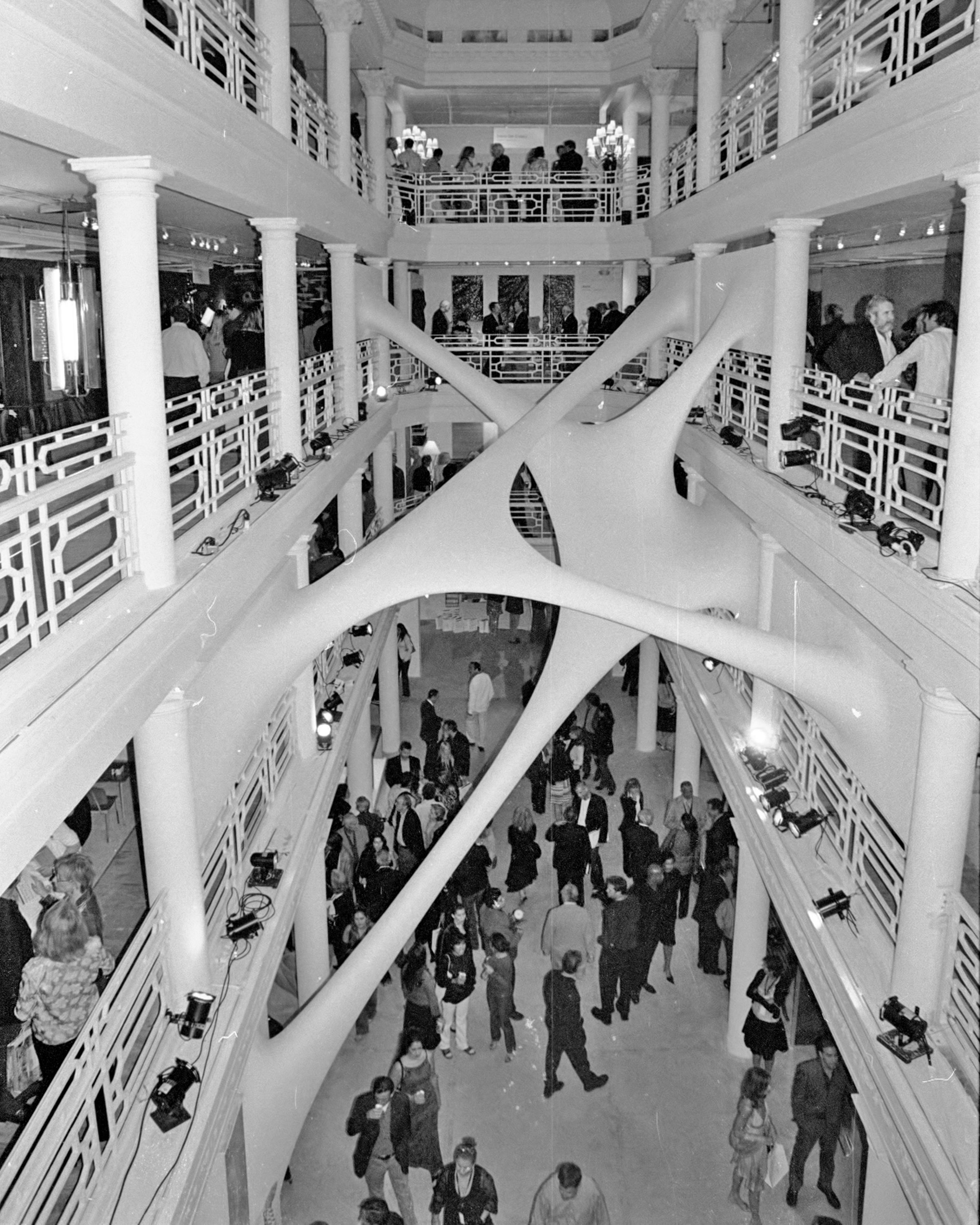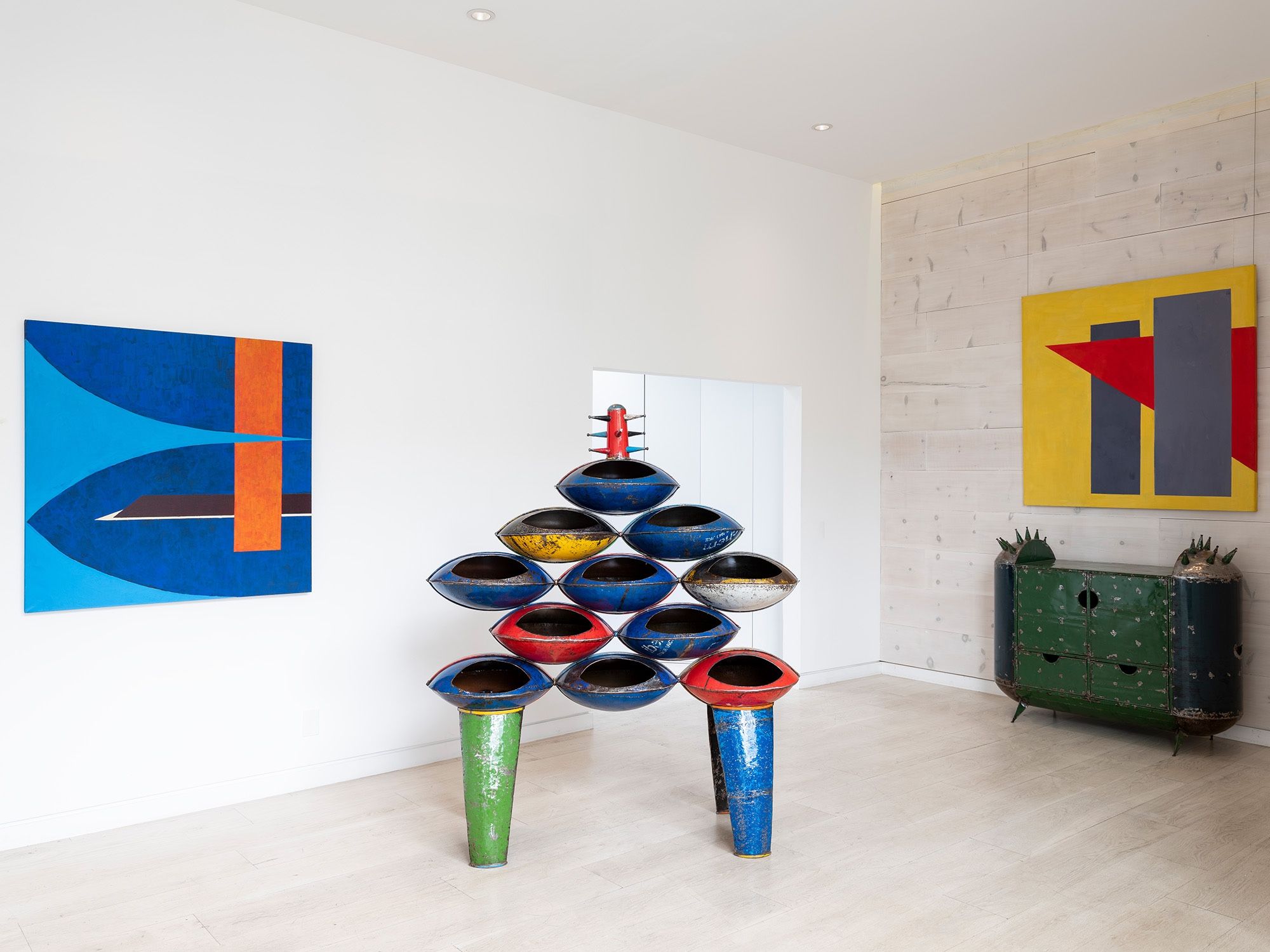IN THE MIX JUNE 13 2024
by Design Miami
At DESIGN MIAMI.BASEL 2024, the global design community pays tribute to pioneering Italian designer

GAETANO PESCE WITH PRATT CHAIR N°7 AT THE CENTRE POMPIDOU EXHIBITION "LE TEMPS DES QUESTIONS" IN 1996.
Photo by Petra & Erik Hesmerg; Courtesy of Pulp Galerie
This past April, the design world lost one of its most celebrated talents—pioneering Italian designer Gaetano Pesce (1939 - 2024). Over his 50-year career, Pesce was responsible for innovative, iconic works spanning the fields of architecture, urban planning, industrial design and beyond. Throughout, his practice was marked by a passion for experimentation, an iconoclastic spirit, and a celebration of individuality. His loss has been felt palpably around the globe, and the outpouring of emotion that has followed—from students, fans, critics, colleagues, and collaborators—is a testament to Pesce’s immense impact on the field of design and, more intimately, to all those who had the pleasure of knowing and working with him.
In honor of the late design maestro, this year’s edition of DESIGN MIAMI.BASEL features a number of tributes to Pesce, intended to honor his legacy moving forward.

GAETANO PESCE: A CELEBRATION INSTALLATION AT DESIGN MIAMI.BASEL 2024
Photo by Ivan Erofeev for Design Miami
Upon entering this year’s fair, visitors are welcomed by Gaetano Pesce: A Celebration, a collaborative presentation celebrating the breadth of Pesce’s oeuvre and impact. Presented by a trio of esteemed design galleries—Friedman Benda (New York / LA) and first-time Basel exhibitors Pulp Galerie and downtown+ (both Paris)—the installation features key works from the 1970s to present that highlight Pesce’s innovations in creating what he referred to as “objects of our time.”

FROM LEFT: AIRPORT LAMP (1986) BY GAETANO PESCE, PRESENTED BY DOWNTOWN +; NOBODY’S PERFECT BOOKCASE AND ARMCHAIR (BOTH 2002), PRESENTED BY PULP GALERIE
Photos by Ivan Erofeev for Design Miami
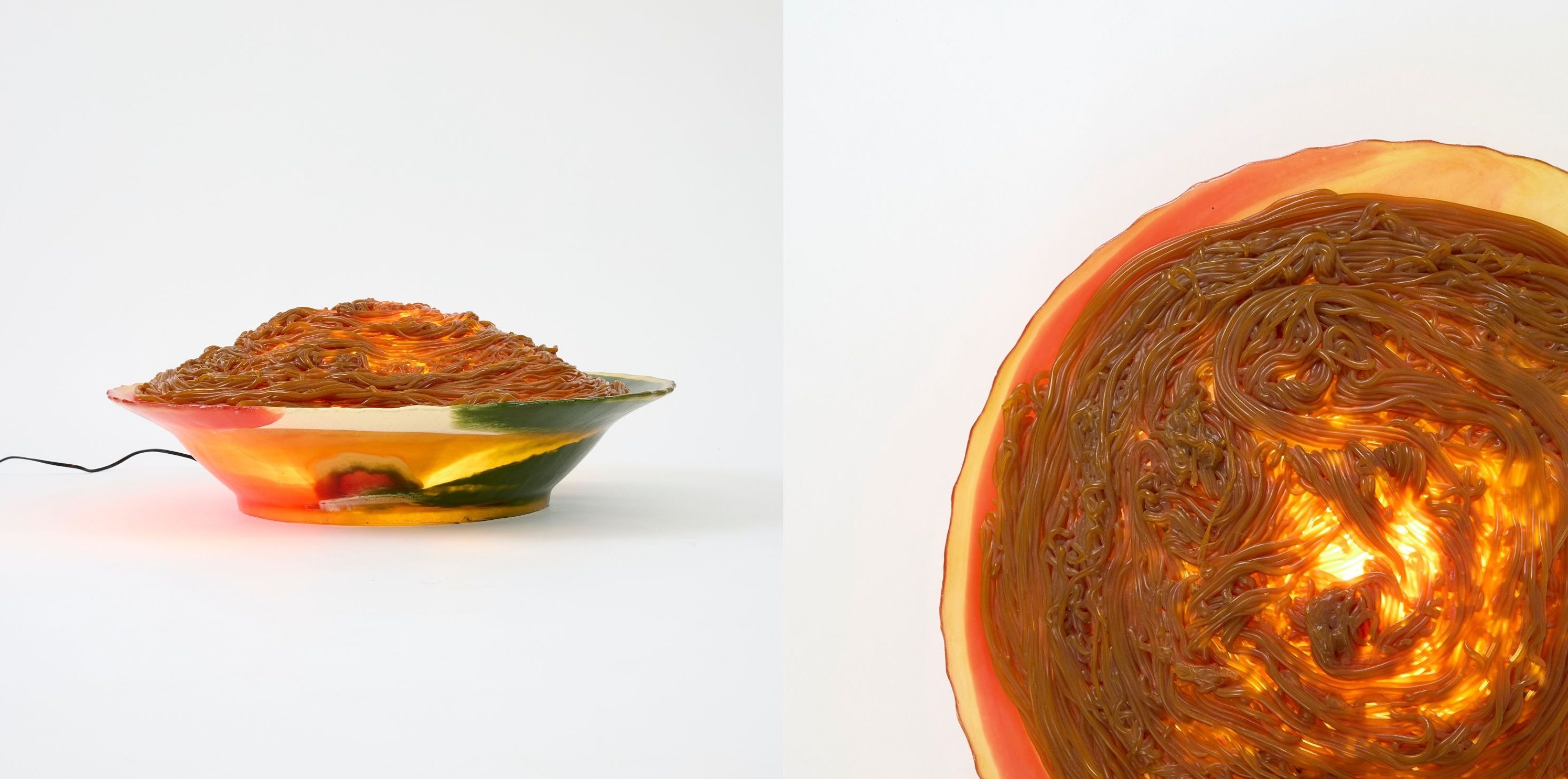
GAETANO PESCE'S OH ITALY (SPAGHETTI) LAMP (C. 1990), FISH DESIGN NY EARLY EDITION. PRESENTED BY PULP GALERIE
Photos courtesy of Pulp Galerie

NOBODY'S PERFEC CHAIR (2002) BY GAETANO PESCE, PRESENTED BY PULP GALERIE
Photo courtesy of Pulp Galerie
Exhibited pieces include, among other greats, a bookcase and armchair in resin—Pesce’s material of choice—from the Nobody’s Perfect collection, through which Pesce came to terms with what he saw as the impossibility of truly perfect design. The pieces themselves embody this belief, and even advocate for “imperfection,” as each one has been cast in molds by hand without uniform colors or dimensions. As a result, every piece is unique, revealing the so-called “shortcomings” of their maker—as proof that, of course, nobody's perfect. Or as Pulp Galerie founders Paul-Louis Betto and Paul Ménacer-Poussin put it: “Human nature comes back every time.”
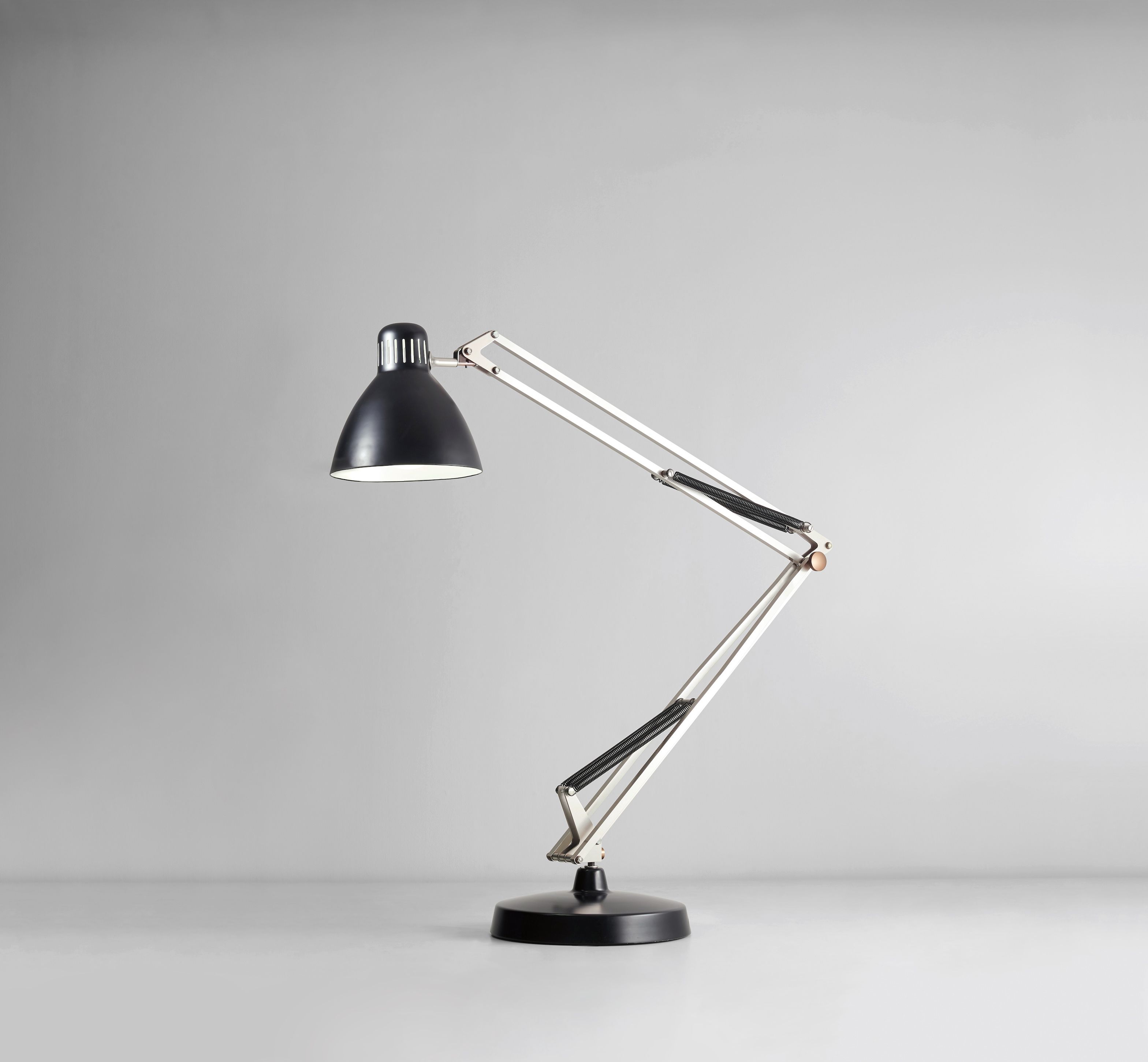
PROTOTYPE NO. 000-F FOR MOLOCH FLOOR LAMP (1971) DESIGNED BY GAETANO PESCE, PRODUCED BY BRACCIODIFERRO. PRESENTED BY FRIEDMAN BENDA; 90.5 X 122.75 X 33.75 INCHES
Photo courtesy of Phillips and Gaetano Pesce
There is, as well, a fabulous prototype Moloch lamp, Pesce’s radically scaled version of the Anglepoise desk lamp, which towers at seven and a half tall. Describing the work, Jennifer Olshin, Partner and Founding Director of Friedman Benda, observes, “Innovative, humorous, and incorporating a spirit indicative of a life force, the Moloch lamp of 1971 stands as a testament to Pesce’s ability to embrace and challenge conventional ideas and forms. Gigantic, with industrial components it manages to occupy and dance in its space, harking back, while moving forward.”

SATELLITE PROJECT BY CAPSULE, CREATED IN COLLABORATION WITH DO YOU READ ME?! AND KODOJI PRESS
Photo by Ivan Erofeev for Design Miami
Just steps away from the entrance installation, Capsule, do you read me?!, and Kodoji Press have created a special Satellite project dedicated to Pesce’s radical genius. The inviting reading lounge features some of the late Italian designer's most celebrated pieces, including his modular sofa created for Meritalia in a spectrum of bold colors.
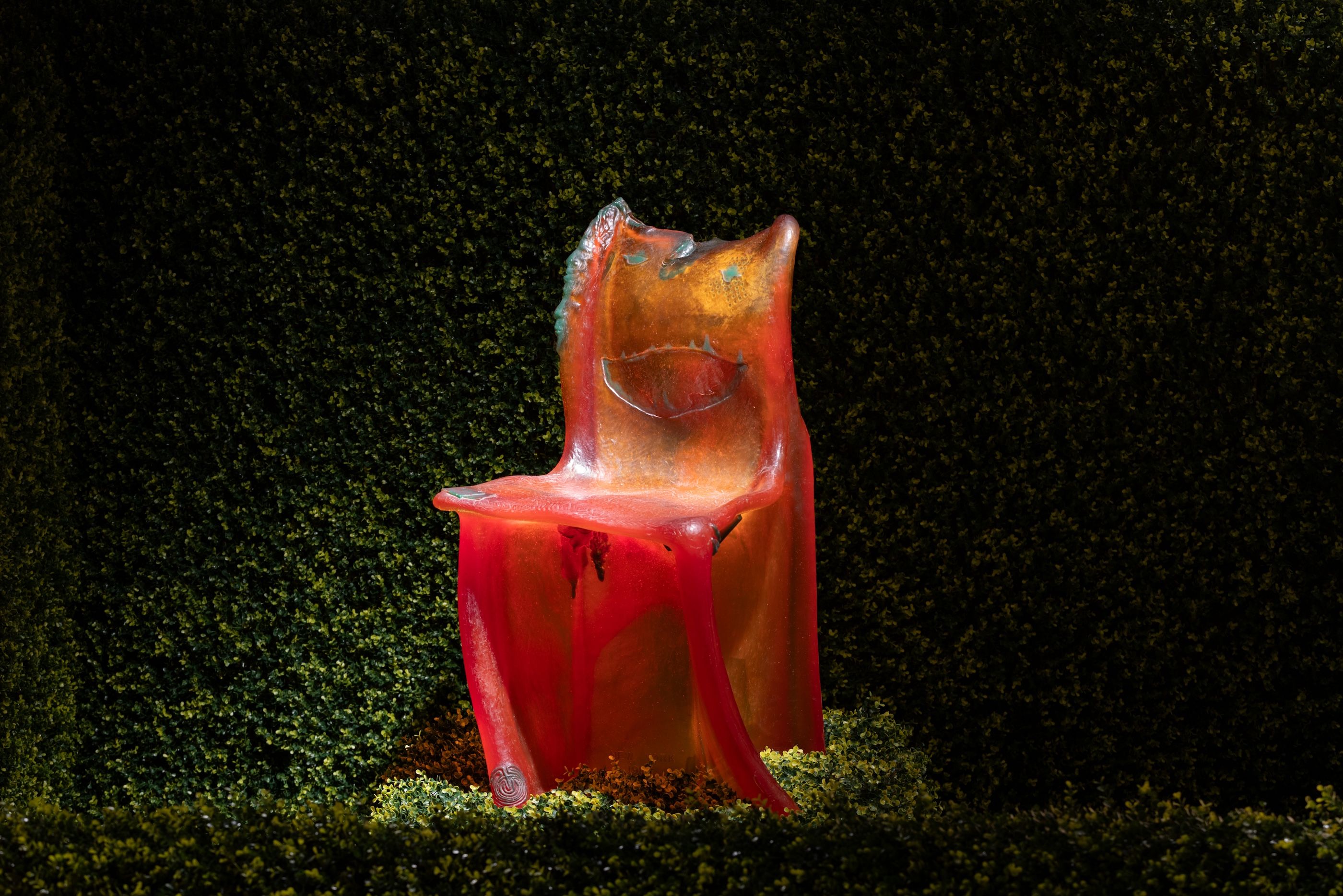
GAETANO PESCE'S 1984 PRATT CHAIR N°7, PRESENTED BY PULP GALERIE. THE PIECE WON THE FAIR'S BEST HISTORIC WORK AWARD
Photo by Ivan Erofeev for Design Miami
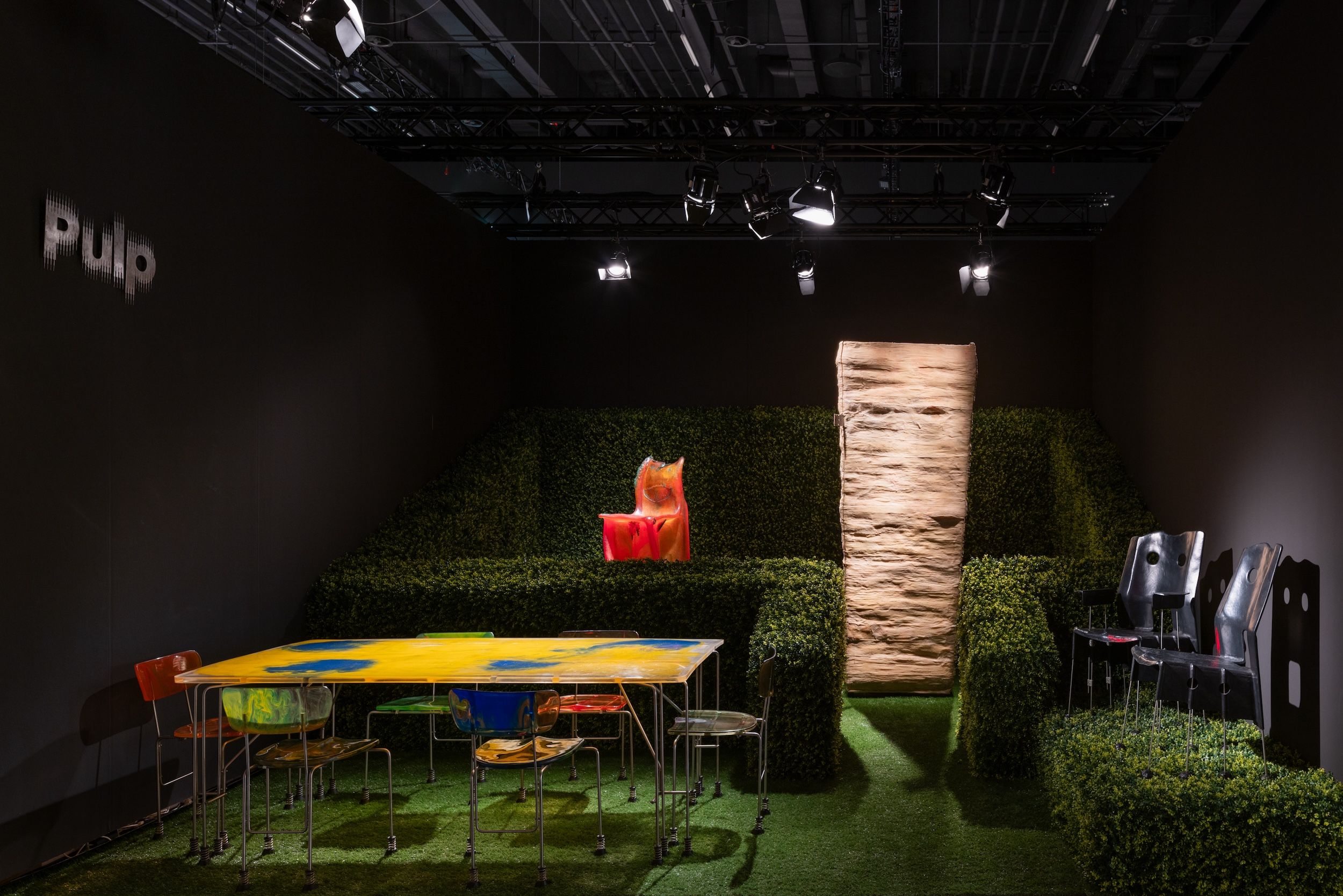
PULP GALERIE'S CURIO PRESENTATION WAS DEDICATED TO OBJECTS FROM PESCE’S EXHIBITION AT CENTRE POMPIDOU IN 1996.
Photo by Ivan Erofeev for Design Miami
Inside the fair proper, Pesce’s presence is felt in both the Curio and Gallery programs as well. Pulp Galerie’s debut Curio presentation pays tribute to the inventive designer through a scenography envisioned as a stroll through an Italian garden punctuated by Pesce’s pieces. The theatrical atmosphere includes designs first shown at the Centre Pompidou 1996 exhibition, Le temps de questions, including the Sick (or Sikh) Cabinet, handmade by Pesce himself, and the 1984 Pratt chair n°7—winner of fair’s Best Historic Work Award. As Betto and Ménacer-Poussin explain: “The original series of nine Pratt Chairs is the result of a collaboration with students at the Pratt Institute in New York and reflects on the need for solidity...The composition of the resin varies, as each one has more or less hardener. The first ones collapse completely to the floor, the next few can hold up to a child, and so on, all the way to the last one, which is as hard as a conventional chair. The mold gives the chair incredible detail, on the verge of bas-relief, ranging from [depictions of] faces, a crucifix, mountains, playing cards, a steamy sex scene, and even Pesce’s handprint. The Pratt Chair acts as the artist’s reliquary.”

GALERIE GASTOU PRESENTATION AT DESIGN MIAMI.BASEL 2024
Photo by Ivan Erofeev for Design Miami
And at Galerie Yves Gastou (Paris), Pesce’s pieces are presented in conversation with works by Shiro Kuramata. The focus is on the materiality of plastic, and its diverse interpretations, as evidenced by Kuramata’s quiet tranquility and Pesce’s Baroque extravagance. As Victor Gastou explains: “This juxtaposition aims to promote the beauty of plastic while creating a harmonious dialogue between seemingly opposing styles. The exhibition showcases the transformative potential of plastic, molded to convey the serene balance of Kuramata's minimalism and the lavish theatricality of Pesce's designs.”
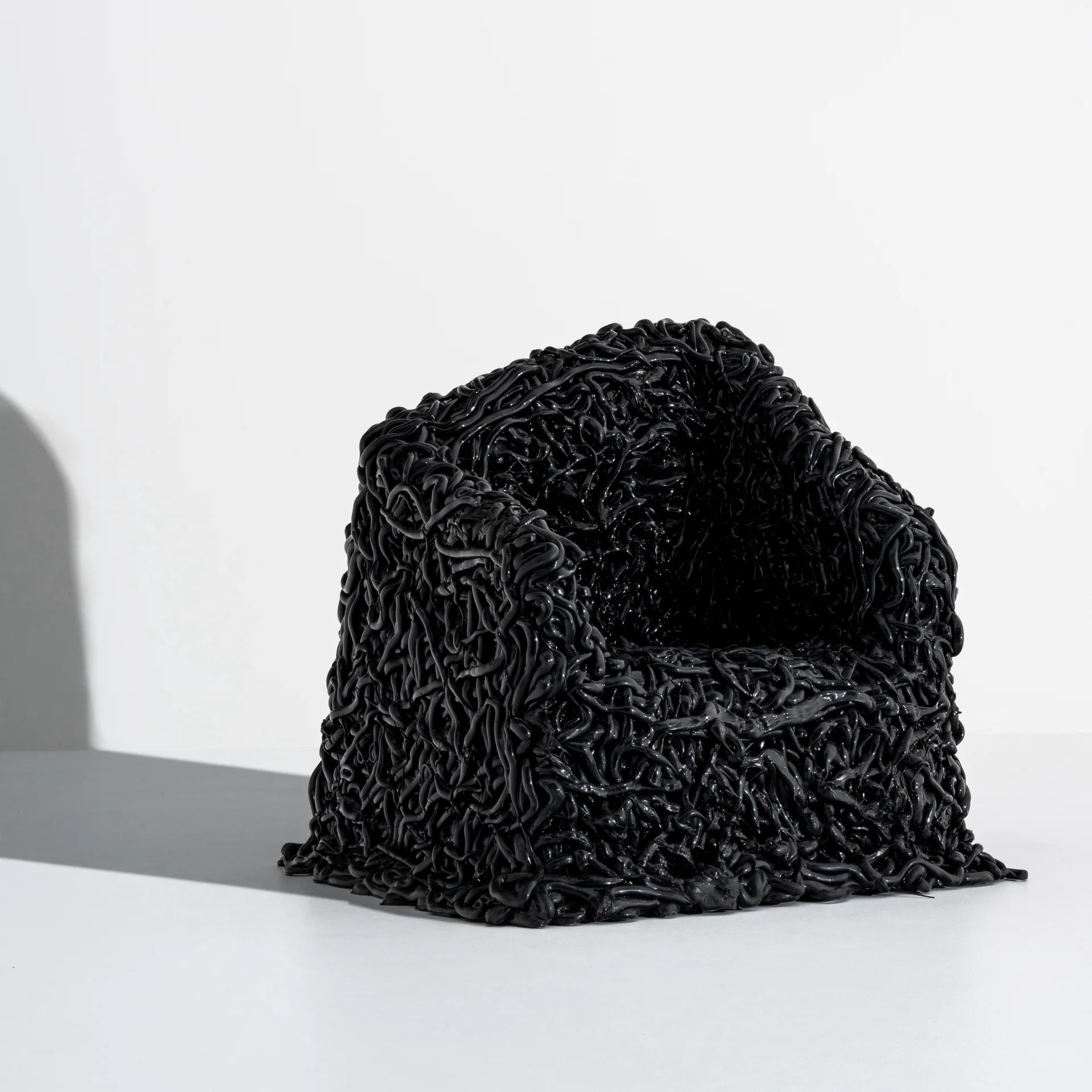
GAETANO PESCE'S FAUTEUIL “SENZA FINE” (2010), PRESENTED BY GALERIE YVES GASTOU AT DESIGN MIAMI.BASEL 2024
Photo courtesy of Galerie Yves Gastou
He goes on: “What I love about Pesce is this incredible contradiction in his work. He is a great intellectual, a theorist. At the same time, his work is a constant exploration of the fluidity of form and its organic side. He has sublimated flexibility and imperfection, and to achieve this he lets his work live, refusing to completely control it. He came to the conclusion that the best way to express fluidity is to let nature take its course—and has done so with so much humor and provocation!”
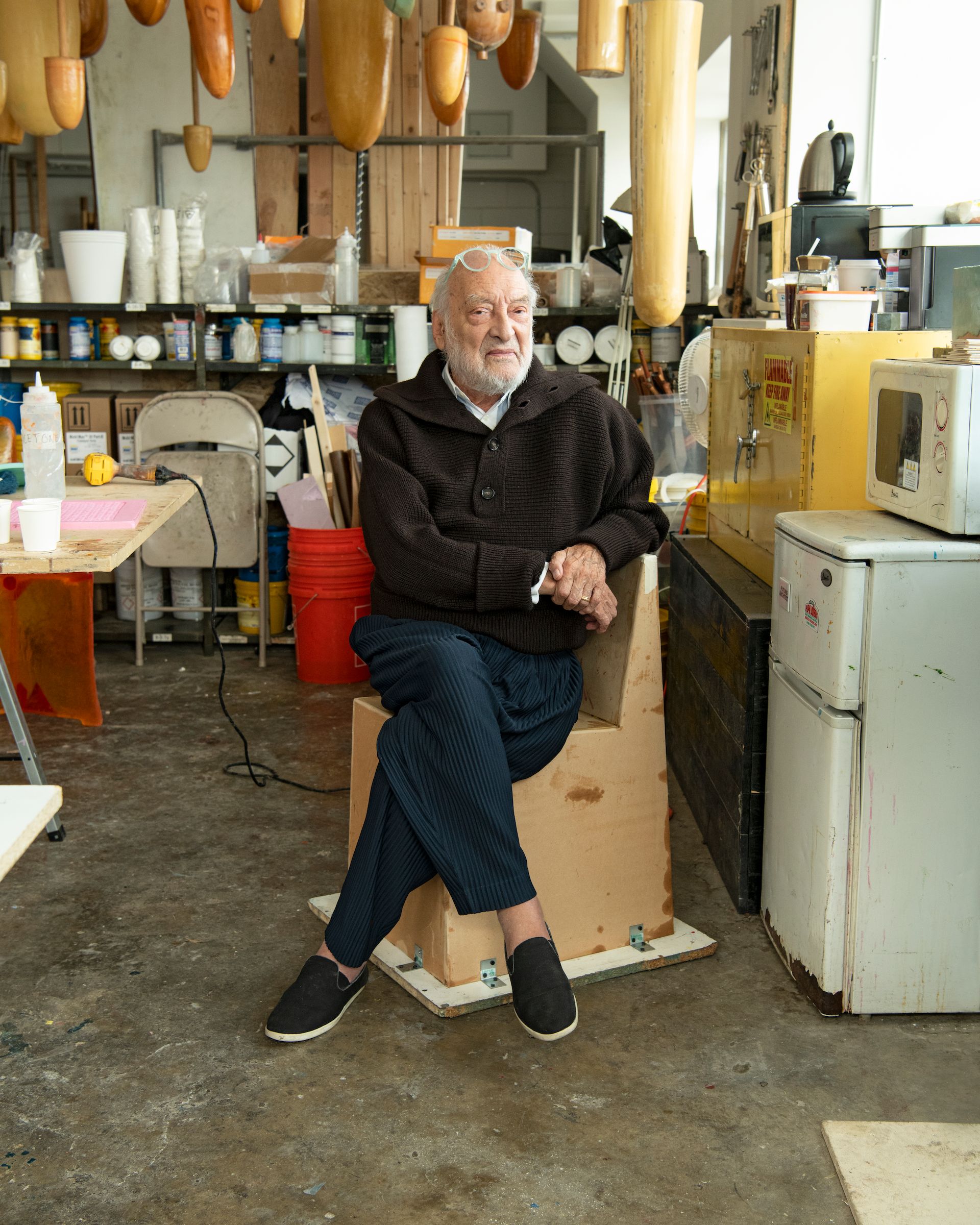
THE INIMITABLE GAETANO PESCE IN HIS BROOKLYN STUDIO
Photo by Stephen Shore, Courtesy of Gaetano Pesce Studio
“His impact on the future of design is just beginning.”
-curator, historian, and writer Glenn Adamson
Beside the entrance installation, American curator, historian, and writer Glenn Adamson has also penned a tribute to Pesce, which speaks to the designer’s legacy and the spirit of admiration he garnered from the creative community. (Adamson is, as well, the upcoming DESIGN MIAMI.2024 Curatorial Director.) He writes:
“Gaetano Pesce was the most independent-minded designer of recent times. He was also among the most influential–a role model to countless others. Perhaps these two things go together, for contradiction was at the heart of Pesce’s creative vision. Completely dedicated to personal expression, he also loved working with manufacturers, finding ways to push them to embrace experimental processes. A true avant gardiste, Pesce’s work has a profundity which rewards deep exploration. Yet it also spoke loud and clear, in ways that even a child—perhaps especially a child—can read.
Most of all, Pesce believed in making what he called 'objects of our time.' That meant working in plastic and other modern materials. It meant constant innovation. Yet in retrospect, we can see that his great subject was the human condition itself, which never truly changes. All these things were true of Pesce, all at once. Now he is gone. His remarkable, completely incoherent oeuvre – tragic and joyful, ecstatic and conceptual, anarchic and precise–is complete at last. And his impact on the future of design is just beginning.”
